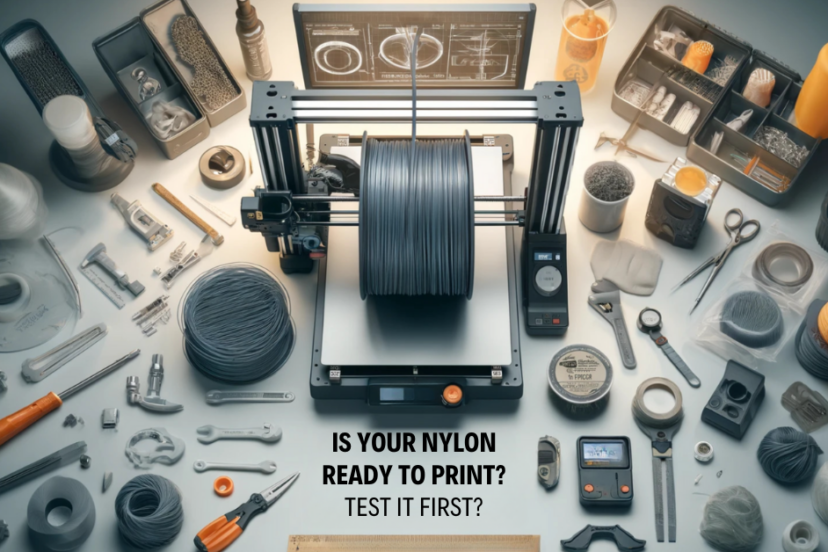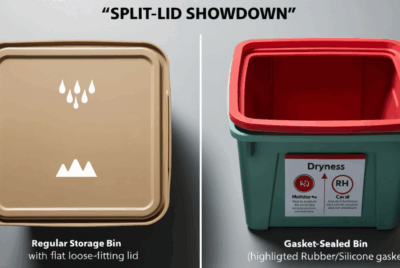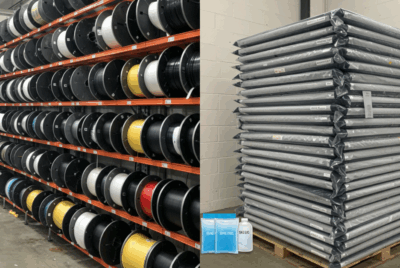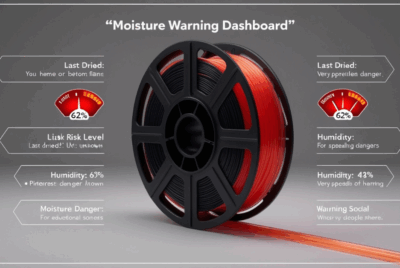How do I test Nylon filament?
Testing Nylon filament is essential to ensure it’s in good condition for 3D printing. Since Nylon is hygroscopic (it absorbs moisture), it’s crucial to check the filament before printing to avoid issues like poor print quality, weak prints, or clogging. Here’s how you can test Nylon filament:
1. Visual Inspection
- What to Look For:
- Spool Condition: Check the spool for any signs of damage, such as cracks, bends, or loose filament. Make sure the filament is wound properly and isn’t tangled.
- Filament Surface: Inspect the filament for any visible discoloration, surface blemishes, or rough spots. Any issues here could indicate quality problems.
- Why it’s Important: Visible defects can affect print quality and cause problems during extrusion.
2. Check for Moisture
- What to Look For:
- Signs of Moisture Absorption: If the filament has absorbed moisture, it may appear slightly cloudy, feel softer than usual, or have a spongy texture.
- Popping or Bubbling During Extrusion: If you’re printing with Nylon that has absorbed moisture, you may hear popping or bubbling sounds during the extrusion process. This happens because moisture inside the filament turns to steam, creating bubbles.
- How to Test:
- Dry the Filament: If you suspect moisture, dry the filament using a filament dryer, oven, or food dehydrator for several hours at the recommended temperature (70°C–75°C or 158°F–167°F for Nylon).
- Test Print: After drying, perform a small test print to check for bubbling or poor extrusion.
- Why it’s Important: Moisture can severely affect the print quality and cause issues like weak adhesion, warping, and layer separation.
3. Print Test
- What to Look For:
- Extrusion Consistency: Load the Nylon filament into your 3D printer and start a test print. Watch for any inconsistencies in extrusion, such as uneven filament flow or clogging.
- Print Quality: Observe the first few layers for smooth extrusion and proper adhesion to the bed. Look for defects, layer separation, or bubbling.
- Why it’s Important: A successful test print will confirm that the filament is performing as expected and will give you an idea of its printability.
4. Check for Brittleness
- What to Look For:
- Filament Flexibility: Bend a small section of the filament between your fingers. Nylon should have some flexibility. If the filament snaps or feels brittle, it may have absorbed too much moisture or been improperly stored.
- Why it’s Important: If the filament is brittle, it may break during printing, leading to failed prints or clogging of the nozzle.
5. Test Adhesion
- What to Look For:
- Bed Adhesion: After loading the filament and starting a test print, check the first layer for good adhesion to the print bed. If the Nylon is properly stored and dried, it should adhere well without lifting or warping.
- Why it’s Important: Poor bed adhesion can lead to print failure or warping during the printing process.
6. Check for Warping and Shrinkage
- What to Look For:
- Warping: If the filament is poorly stored or has absorbed moisture, it may warp or lift from the print bed during printing. Monitor the print closely for signs of warping or curling edges.
- Shrinkage: During cooling, Nylon can shrink, which may cause distortion or layer misalignment.
- Why it’s Important: Warping and shrinkage can ruin prints, especially on large or intricate objects.
Final Thoughts:
Testing Nylon filament involves visual inspection, checking for moisture, performing test prints, and assessing its flexibility, adhesion, and warping. If the filament shows signs of moisture, drying it before use is essential. A successful test print with smooth extrusion and good adhesion indicates that the filament is in good condition. If you encounter issues during testing, you may need to adjust your storage practices or try drying the filament further.




